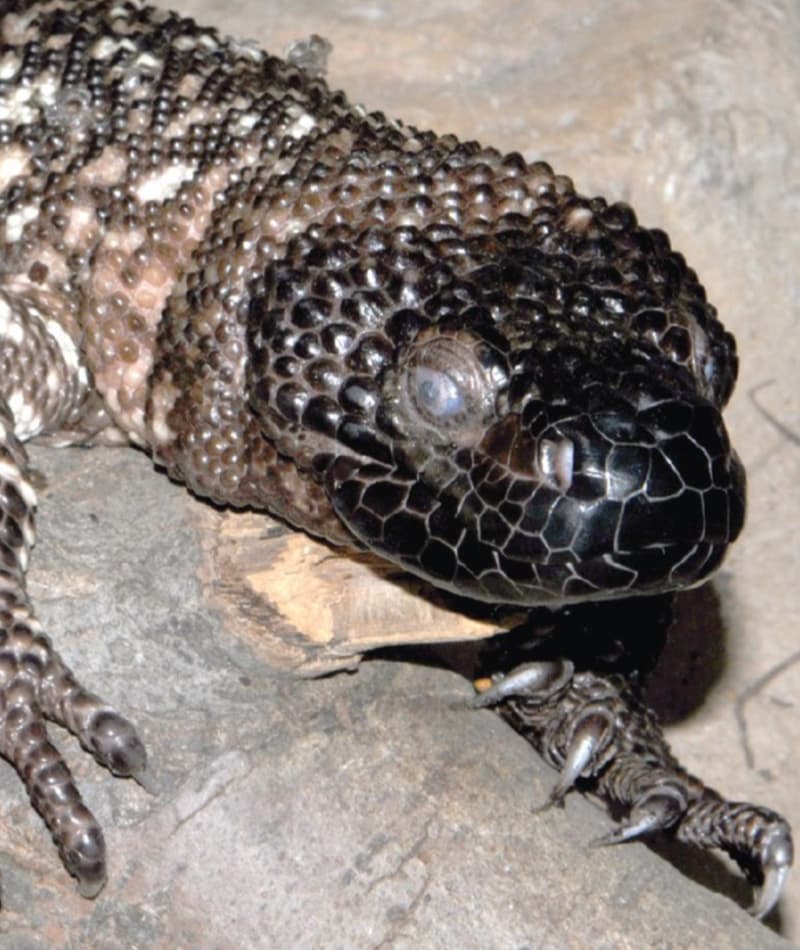
Mexican Beaded Lizard
Heloderma horridum horridum
Did you know?
- Mexican beaded lizards are part of the Helodermatidae family, which they share with the gila monster.
- They live in dry forests and scrublands in Western Mexico.
- They are one of only two poisonous lizards in the world.
- They can be over three feet long.
- A female will lay two to 22 eggs in one clutch.
Adaptations
There are four subspecies of Mexican beaded lizards, and they all look slightly different. All Mexican beaded lizards are covered with bead-like scales on their head and back. They are large lizards and opportunistic carnivores, and when needed, their strong limbs are used to dig into the ground to find their next meal. Their tail can act as storage, allowing them to bulk up on food for later. They are also venomous, and their venom helps the lizards kill captured prey.
Courtship
Mexican beaded lizards court and mate in September and October (springtime in the Southern Hemisphere). Males engage in ritual combat that may last several hours; the victor has the privilege of mating with the female. The female lays anywhere from two to 22 eggs in one clutch between October and December. The eggs hatch the following June or July.
Threat Level
- Unknown
- Common
- Near Threatened
- Threatened
- Endangered
- Critically Endangered
- Extinct in the Wild
Threatened
The Mexican Beaded Lizard faces a high risk of extinction in the wild.
Range
Western Mexico
Habitat
Dry forests, scrublands, woodlands

We care about Mexican beaded lizards
Mexican beaded lizards suffer from the illegal pet trade and from habitat destruction. We support Mexican beaded lizards in the Herpetarium at the Zoo. Learn more about how we are helping wildlife around the world.
Find this animal in Historic Hill

SAINT LOUIS ZOO ZONE
Historic Hill
Historic Hill is a lovely stroll through one of the oldest parts of the Saint Louis Zoo. From the 1904 World’s Fair Flight Cage to the Spanish architectural flavor of the 1920s in the Bird House, Primate House and Herpetarium to the finishing touches of our thoroughly modern exhibits, this area of the Zoo has a unique ambiance and a nostalgic history that make it a great destination.

